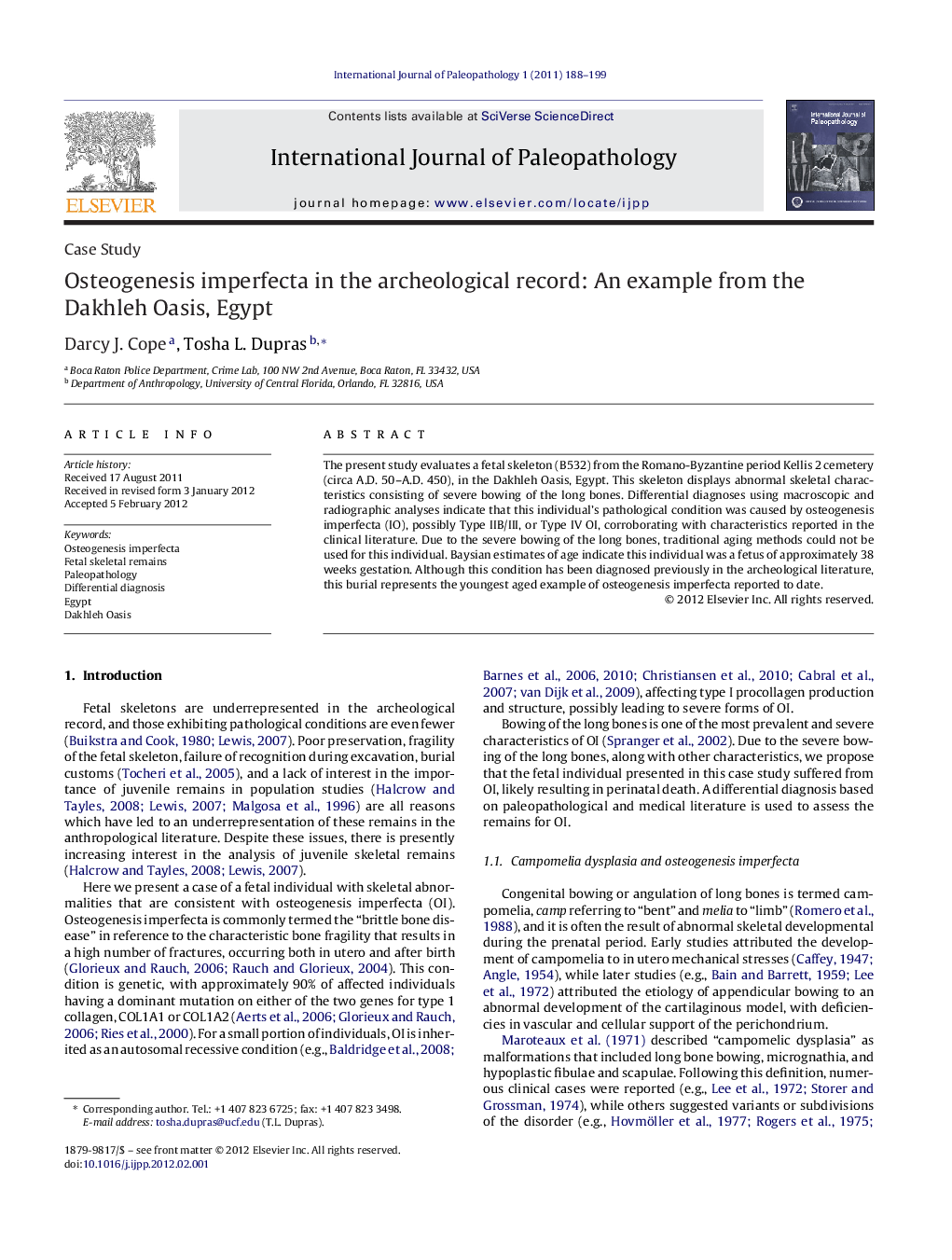| Article ID | Journal | Published Year | Pages | File Type |
|---|---|---|---|---|
| 101359 | International Journal of Paleopathology | 2011 | 12 Pages |
The present study evaluates a fetal skeleton (B532) from the Romano-Byzantine period Kellis 2 cemetery (circa A.D. 50–A.D. 450), in the Dakhleh Oasis, Egypt. This skeleton displays abnormal skeletal characteristics consisting of severe bowing of the long bones. Differential diagnoses using macroscopic and radiographic analyses indicate that this individual's pathological condition was caused by osteogenesis imperfecta (IO), possibly Type IIB/III, or Type IV OI, corroborating with characteristics reported in the clinical literature. Due to the severe bowing of the long bones, traditional aging methods could not be used for this individual. Baysian estimates of age indicate this individual was a fetus of approximately 38 weeks gestation. Although this condition has been diagnosed previously in the archeological literature, this burial represents the youngest aged example of osteogenesis imperfecta reported to date.
► Presents differential diagnosis of skeletal characteristics of osteogenesis imperfecta. ► Presents method for aging skeletal remains with dysplasia. ► Presents the youngest case of archeologically documented osteogenesis imperfecta.
